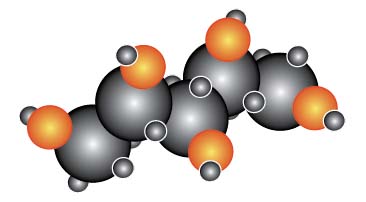The ocean is one of the most beautiful and bio-diverse habitats on this planet. Living in a saline environment, however, requires that organisms have certain physiological adaptations necessary to survive. One of the most important of these numerous adaptations is osmoregulation.
D-Mannitol, a low molecular-mass sugar alcohol, is one of the primary storage products in F. distichus (1). Mannitol, however, has a more curious function in many phaeophytes, including F. distichus. This sugar alcohol is one of the primary osmoregulatory molecules in the algae (1). Intracellular concentration is carefully regulated based on ambient salinity. Hyper-saline environments will cause the upregulation of Mannitol production in order to increase intracellular ion concentration and maintain the isosmotic gradient (2). Similarly, hypo-saline conditions will invoke a downregulation of mannitol production ensuring the conservation of intracellular water (2).
|

